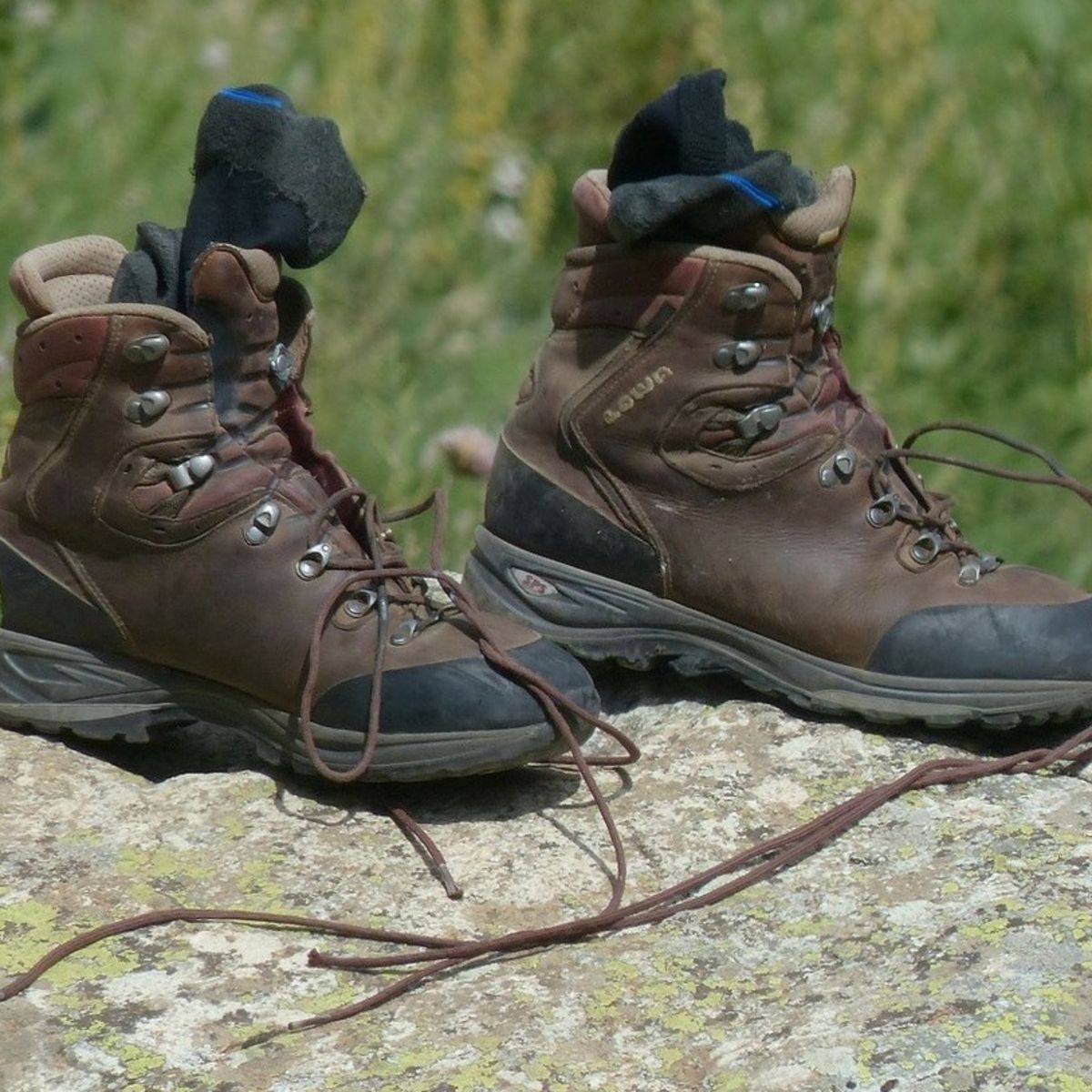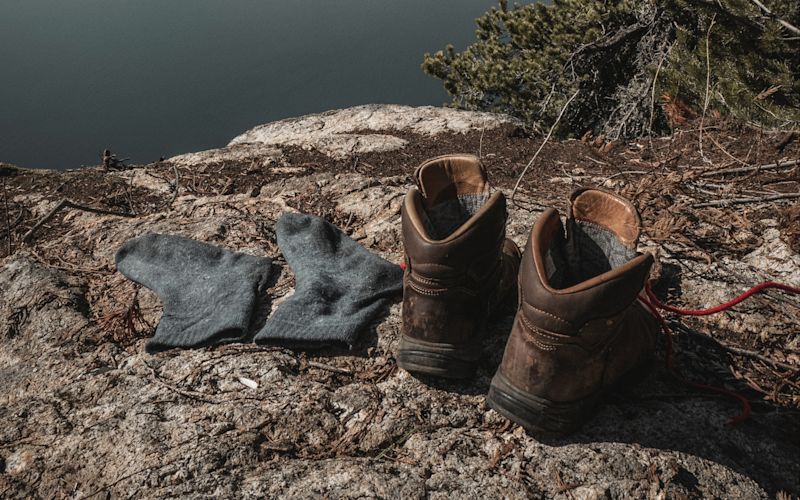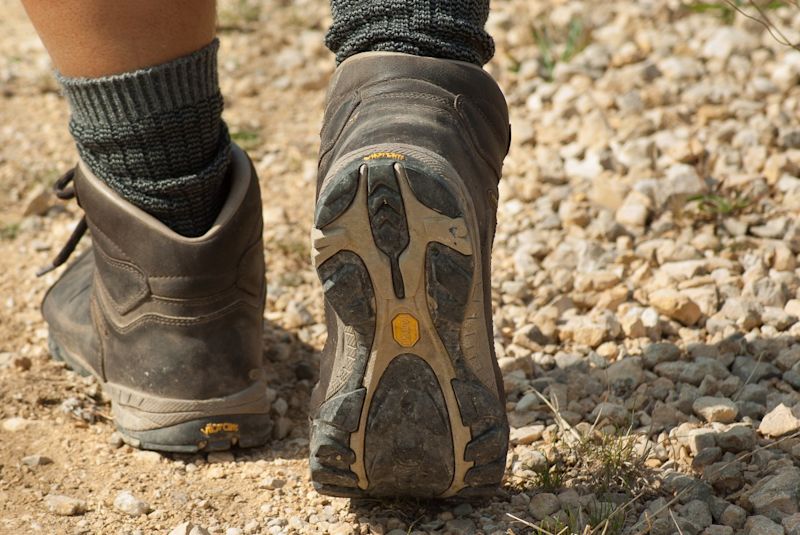Hiking socks
Quality hiking socks are long socks of a medium thickness that are good at wicking away moisture and keeping your feet dry. They also often have extra padding around the toes and heels for comfort during the long hours on your feet.
The best materials for hiking socks are wool and nylon combined. They keep your feet warm while also wicking moisture and drying quickly. Cotton socks are a big no-no, as they soak up moisture and dry slowly.
We suggest that you bring a few pairs of quality hiking socks along with you on the climb so that you always have a dry pair to start the day with.
Test your socks with your boots
It’s important to test out your hiking socks before coming to Kilimanjaro.
Firstly, you should ideally take your hiking socks with you when you select your hiking boots to ensure they fit nicely into your boots.
That done, you also should do some preparation hikes to break in the boots and test the socks. For instance, do the socks have worrisome seams? Do they stay put or do they rotate or bunch? Is the fabric kind to your feet?
It’s important to test out your hiking socks before coming to Kilimanjaro. Never bring new socks with you.
Consider toe socks if your toes blister easily
You might also like to consider toe socks if you’re prone to blistering between your toes. Toe socks have separate compartments for each toe. They take some getting used to, but some hikers find them useful.
Thermal socks
The higher you climb on Kilimanjaro, the more important thermal socks become. On summit day, you’ll be walking for many hours in an arctic climate. Thermal socks aren’t just a comfort in such a situation, but a necessity!
As discussed above, the important thing with thermal socks is to ensure your feet still fit in your hiking boots. We suggest bringing at least one pair of thermal socks. But you might also enjoy a second pair for the day or two before the summit hike, as things can be pretty darn cold at that elevation too.
A warm pair of socks like those made from wool are essential for summit day
Test out your socks before the trek
Be sure to do some test hikes in which you wear your thermal socks with your hiking boots to check their comfortability. A badly positioned sock seam can spell doom on a long hike!
Hiking sock liners
We also suggest you bring sock liners – or liner socks – to Kilimanjaro. These are great as they do two things:
- reduce friction
- wick away moisture
Sock liners reduce friction
Sock liners are great in helping to prevent blisters because the friction caused by long hours of hiking gathers between the liner and the sock rather than between your skin and the sock.
It’s quite common for climbers to get blisters on their feet, especially on summit day when you’re on your feet for around 12 hours. Sock liners can drastically reduce your chances of developing blisters.
Sock liners wick away moisture
Sock liners also wick away the sweat and moisture from your feet and send it into the thicker hiking socks. Companies that specialise in sports socks often have a trademarked fabric with good moisture-wicking that you can look for. Falke, for instance, advertises its sock liners as being made with Drynamix.
Please note that sports sock liners are long, thin and made of synthetic material. They need to be long so they don't inch their way down your heels and bunch. The reason for synthetic material is that this helps to wick away sweat and keep your feet dry. You want them thin so as not to make your feet too chunky for your boots.
So yes, a pair of quality sock liners could save your feet from all sorts of agonies. We suggest bringing three pairs along, one of which you set aside just for summit day. Again, be sure to do preparation hikes wearing your sock liners to ensure they’re comfortable and work as advertised.









